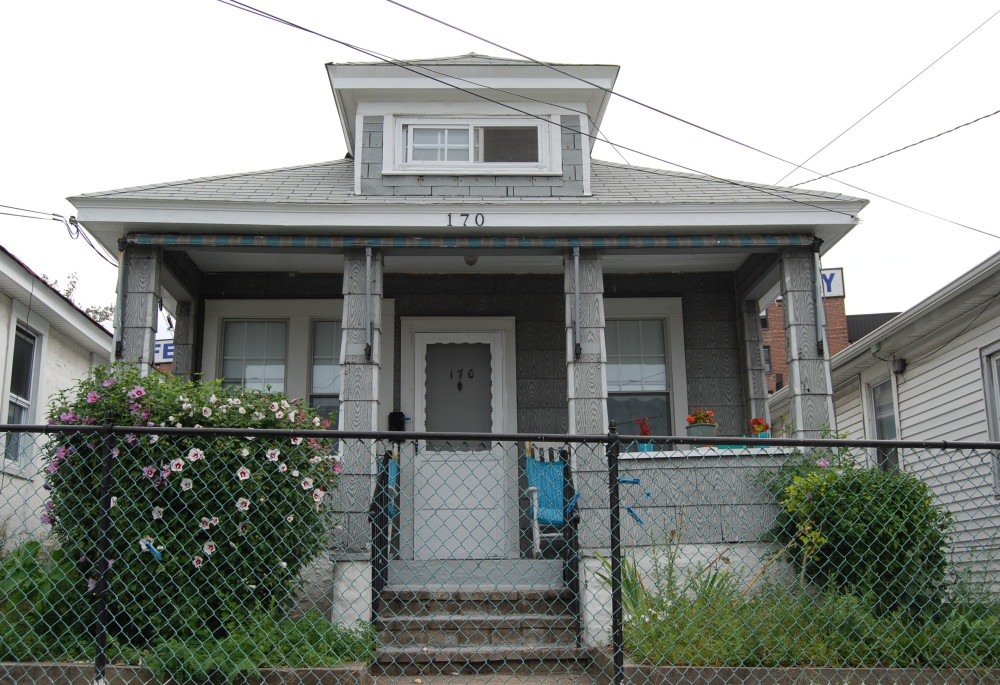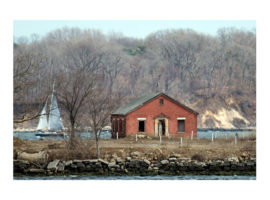Far Rockaway Beachside Bungalows, Queens
In the early 20th century, a thriving network of vacation communities was constructed along the oceanfront in Brooklyn and Queens to accommodate the city’s working class in their summertime recreational pursuits. One of these was Rockaway, Queens, which was once home to over 7,000 modest bungalows in dozens of distinct seasonal communities. Sadly, fewer than 400 exist today, the rest having been demolished to make way for new development beginning in the mid 20th century. Rockaway’s largest cluster of existing bungalows (93 in total), located in Far Rockaway on Beach 24th, 25th and 26th Streets south of Seagirt Avenue, was once part of a Russian and German Jewish immigrant community called Wavecrest.
Designed by architect Henry Hohauser and constructed by builder Isaac Zaret in 1921-25, the Wavecrest bungalows are vernacular in design and constructed of local materials such as locust trees, brick and cedar shingles. Their architectural details include the use of hip roofs, central dormers, exposed roof rafters, porches, stove flues or small brick chimneys, and casement and double sash windows. They were originally clad in wood, brick, cedar shingles or stucco, though in recent years many have been restored in stucco. The interiors feature wood floors, clapboard and plaster walls, and claw-foot tubs in the bathrooms. Measuring approximately 20’ x 30’ on 25’ x 50’ lots, the bungalows are one-and-a-half stories and feature small floor plans with three bedrooms, a small kitchen, and a bathroom.
Seaside vacationing became very popular in America at the end of the 19th century. Those who could not afford to stay in hotels camped on the beach, which inspired developers to construct modest bungalow communities. The Rockaway bungalows were rented out in a “time-share” system to multiple families during the summer months. Friends and neighbors would meet for games and parties on porches, courtyards and streets, but the main attraction was the sandy beach and the lively boardwalk. As Long Island’s beaches became more accessible with the construction of the Parkway system in the early 20th century, Rockaway dwindled in popularity. The post-World War II housing shortage led to the demolition of many bungalows in favor of apartment complexes and public housing under Parks Commissioner Robert Moses. As a result, the remaining bungalows were less desirable and many owners sold them to the city, which then subsidized the non-winterized buildings for year-round occupancy to those on welfare. In Wavecrest, many bungalows were demolished for the widening of Seagirt Boulevard. By the 1970s and 1980s, many of the bungalows had become derelict, and further destruction continues today, as new construction continues to encroach on the area.
In response to the decline of the bungalows, a group of concerned residents formed the Beachside Bungalow Preservation Association (BBPA), which became a not-for-profit organization in 1988. BBPA has worked to raise awareness of the significance of and threat to the bungalows. Due in large part to their efforts, the bungalows have been featured in publications including The New York Times, and were the subject of the 2009 documentary film The Bungalows of Rockaway by Jennifer Callahan and Elizabeth Logan Harris.









